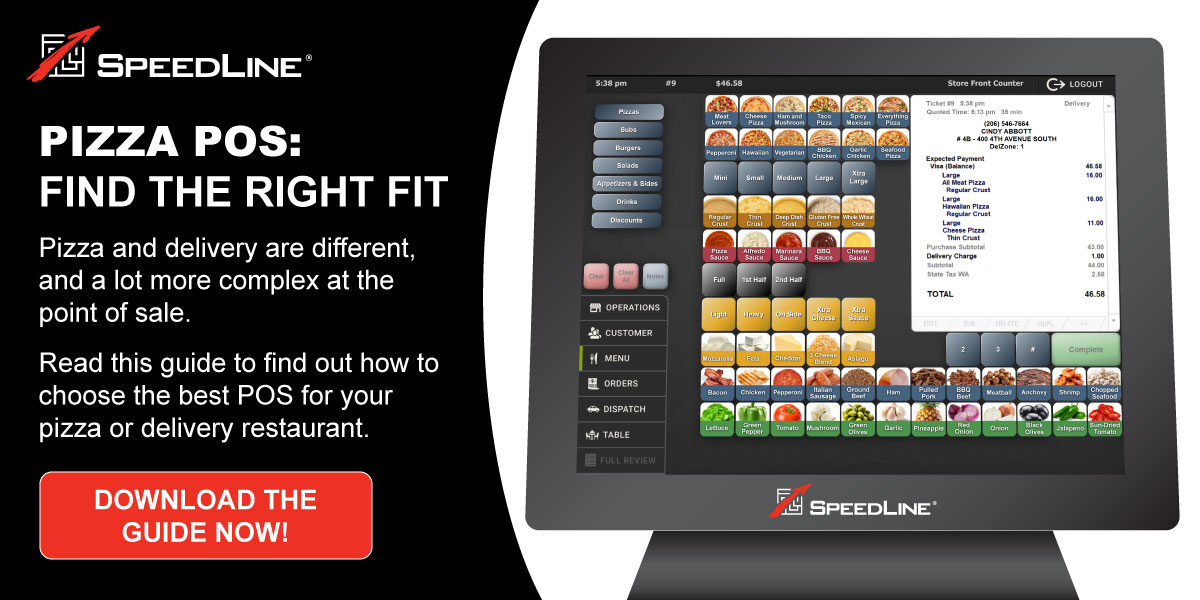In the fast-paced world of the restaurant industry, managing delivery peak hours is crucial for maintaining high customer satisfaction and operational efficiency. With the right tools and strategies, you can ensure every order is fulfilled promptly and accurately. Your pizza point-of-sale (POS) software is a key player in this process, offering invaluable support to help you and your restaurant staff plan, execute, and optimize operations. Here are eight effective strategies to optimize your delivery process and handle peak hours seamlessly.
1. Simplify Your Menu
A streamlined menu can be a powerful tool for improving efficiency during busy hours. By focusing on your most popular and profitable items, you can significantly speed up kitchen and ordering processes. Temporarily limiting the availability of more complex or time-consuming dishes during peak times reduces preparation time while minimizing food waste and the number of ingredients you need to manage. Additionally, a simpler menu minimizes the potential for errors, ensuring smoother and more reliable service.
2. Optimize Terminal Layouts
Properly trained staff are lightning-fast at taking orders — the button layout of your POS terminals substantially impacts the speed and accuracy of order processing. Keep your layouts clear, with high color contrast and intuitive button placement for maximum efficiency. If your POS offers upsell and cross-sell prompts, make sure they're placed at appropriate points in the customer's order-taking journey to avoid unnecessary disruptions or delays. Similarly, make sure your POS is enabled for conversational ordering. This way, there's no need for your staff to translate complex orders into a specific sequence of button touches because you can select the quantity, crust, specialty, and modifier in the same order the customer gave them to you.
Seamless integrations with loyalty programs can also enhance the customer experience while shaving valuable seconds off each order. By optimizing your terminal layouts, you enable your staff to perform at their best, helping dishes move through the kitchen and out the door more quickly.
3. Adjust Staff Scheduling
Proper staffing is essential during peak hours to ensure smooth operations and high customer satisfaction. Use historical sales data to forecast busy periods and schedule your staff accordingly. Aim to have a sufficient number of team members on duty, but be cautious of overstaffing, which can negatively impact your profits. Additionally, cross-training employees to handle multiple roles can provide the flexibility needed to adapt to sudden surges in demand, ensuring that all areas of your restaurant run smoothly.
4. Optimize Delivery Zones
Setting up well-defined delivery zones helps manage the logistics and costs associated with delivering to various areas. By implementing delivery rates based on these zones, you can ensure that each delivery order is economically viable and strategically planned. SpeedLine's Visual Dispatch function is particularly useful, allowing dispatchers to group orders for delivery by simply touching pushpins on a map. This feature also displays estimated driver return times, enabling managers to time orders more efficiently and reduce overall delivery time.
5. Leverage 3rd-Party Delivery Services
Partnering with third-party delivery platforms can alleviate some pressure during peak hours. Integrating your POS system with services like DoorDash Drive can help you manage a higher volume of orders without additional hiring and training. These platforms can handle delivery logistics, allowing your in-house team to focus on preparing and managing orders efficiently.
6. Offer Incentives for Pickup Orders
When delivery demand becomes overwhelming, consider offering special promotions to encourage customers to opt for pickup instead. Pickup-only incentives can help balance the demand between delivery and in-store orders, reducing the strain on your delivery system. Additionally, providing customers with a good deal or a special offer for choosing pickup can enhance their overall experience and foster customer loyalty.
7. Promote Off-Peak Discounts
Encouraging customers to order during off-peak hours can help distribute demand more evenly throughout the day. Offer discounts or special promotions for off-peak orders to incentivize customers to choose these less busy times. This dynamic pricing approach not only eases the pressure during peak hours but also helps boost overall sales by attracting more customers during quieter periods.
8. Conduct Regular Performance Audits
Regularly reviewing your delivery performance metrics is crucial for identifying areas of improvement and addressing any inefficiencies. SpeedLine's Cloud Reporting & Analytics tool provides comprehensive data on the number of orders, delivery times, and order accuracy. By analyzing these metrics, you can spot trends, pinpoint bottlenecks, and make informed decisions to continuously refine and enhance your delivery operations.
Conclusion
Effectively managing peak hours and high delivery demand requires a strategic combination of planning, technology, and continuous improvement. By implementing these strategies, you can streamline your operations, enhance customer satisfaction, and boost your overall profitability.
For more insights on elevating your restaurant operations, check out our eBook: 7 Days to More Profitable Delivery.
Posted on Thu, Aug 08, 2024 @ 07:08 AM.
Updated on August 8, 2024 @ 2:00 PM PST.


